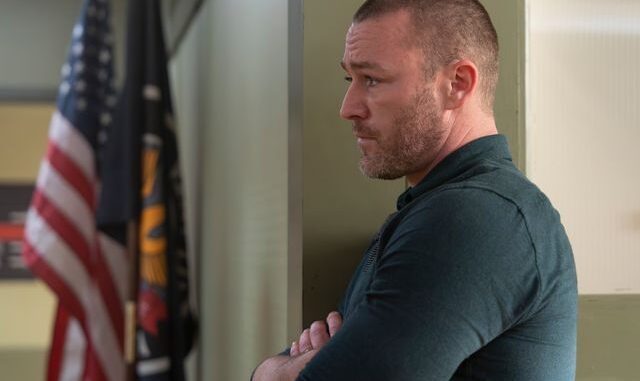
In a world where systemic inequalities and personal biases often intertwine, the journey toward justice can be a challenging one. Ormewood, a figure embodying the struggle against personal prejudice, exemplifies the relentless pursuit of fairness and equity despite facing significant obstacles. This article explores Ormewood’s quest for justice, shedding light on the profound impact of personal prejudice and the resilience required to overcome it.
The Impact of Personal Prejudice
Personal prejudice manifests in various forms—whether based on race, gender, sexual orientation, or socioeconomic status. For Ormewood, these biases were not just abstract concepts; they were lived experiences that shaped his worldview and informed his responses to injustice. Growing up in a community rife with stereotypes and discrimination, Ormewood witnessed firsthand the detrimental effects of prejudice on individuals and families.
These experiences instilled in him a deep sense of empathy and a commitment to challenging the status quo. He understood that personal prejudice could cloud judgment, distort perceptions, and ultimately hinder justice. This awareness motivated him to take action, not just for himself but for others who faced similar challenges.
A Turning Point: Encountering Injustice
Ormewood’s defining moment came when he encountered a blatant act of injustice within his community. A close friend, wrongfully accused of a crime, became a victim of systemic prejudice. The media painted a biased narrative, focusing on the friend’s background rather than the evidence. Witnessing the ramifications of this prejudice—a family torn apart, a reputation damaged—ignited a fire within Ormewood.
Rather than succumbing to despair, he chose to channel his anger into advocacy. This decision marked the beginning of his journey toward justice. Ormewood realized that seeking justice required not only resilience but also strategic action. He began to educate himself about the legal system, community organizing, and the importance of raising awareness around issues of bias and discrimination.
Building a Coalition
Understanding that one voice is often not enough to effect change, Ormewood sought to build a coalition of like-minded individuals committed to combating prejudice and seeking justice. He reached out to local advocacy groups, community leaders, and activists, creating a network dedicated to raising awareness about systemic biases.
Together, they organized rallies, workshops, and discussions that addressed the intersectionality of personal prejudice and systemic injustice. These efforts aimed to empower community members, encouraging them to share their stories and confront their biases. Ormewood emphasized the importance of solidarity, reinforcing the idea that collective action could challenge deeply ingrained prejudices and drive societal change.
Utilizing the Power of Storytelling
Ormewood recognized that stories have the power to transcend prejudice. By sharing personal narratives—both his own and those of others—he aimed to humanize the individuals often reduced to stereotypes. He initiated a storytelling campaign that highlighted the experiences of marginalized communities, showcasing the resilience of individuals facing prejudice.
Through social media, community events, and local news outlets, Ormewood ensured that these stories reached a broader audience. He understood that when people see the humanity in others, it becomes harder to uphold prejudices. This approach not only raised awareness but also fostered empathy, encouraging conversations that challenged biases and misconceptions.
Engaging with the Legal System
Recognizing that personal prejudice often intersects with systemic injustice, Ormewood sought to engage with the legal system to hold accountable those perpetuating discrimination. He partnered with legal advocates to navigate the complexities of the justice system, working to ensure that his friend received a fair trial.
Ormewood learned the importance of advocacy within the legal framework. He attended court hearings, engaged with legal representatives, and supported his friend throughout the process. His involvement served as a reminder that justice requires persistent effort, and that change often starts from within the system itself.
Creating Lasting Change
As Ormewood’s efforts gained momentum, the impact began to ripple through the community. Increased awareness led to conversations about prejudice, justice, and accountability. Local policymakers took notice of the grassroots movement, initiating discussions on reforms aimed at addressing systemic biases within law enforcement and the legal system.
Ormewood’s commitment to justice inspired others to confront their own prejudices, sparking a community-wide reflection on the effects of discrimination. Workshops focused on implicit bias and cultural competency became commonplace, illustrating the transformative power of education in addressing personal prejudice.
Conclusion
Ormewood’s journey exemplifies the profound impact one individual can have in the fight against personal prejudice and systemic injustice. By confronting biases head-on, building coalitions, and advocating for change, he demonstrated that justice is not merely a destination but a continuous journey requiring resilience, empathy, and collective action.
In the face of personal prejudice, Ormewood’s story serves as a beacon of hope, reminding us that seeking justice is not only a personal endeavor but a communal responsibility. As we reflect on his journey, we are encouraged to examine our own biases and consider how we can contribute to a more just and equitable society for all.
